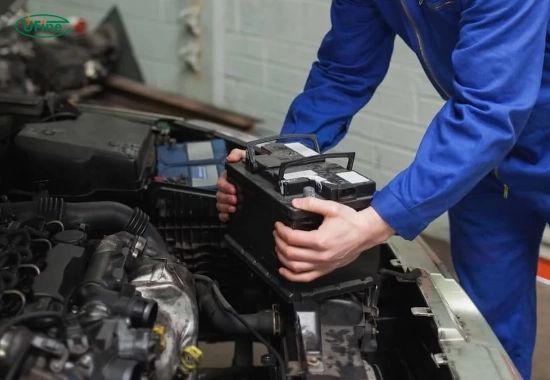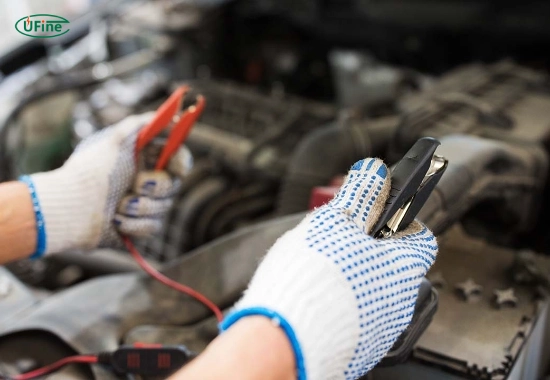Removing a car battery is a crucial skill for any vehicle owner. Whether you’re dealing with a dead battery, replacing an old one, or performing routine maintenance, knowing how to safely and effectively disconnect and remove your car battery can save you time and money. This comprehensive guide will explore removing a car battery, including safety precautions, tools needed, and steps to follow. We will also address common questions and provide tips for ensuring your new battery is secure and adequately disposed of.
Part 1. Why is it essential to remove a car battery safely?
Removing a car battery is not just about pulling out cables; it involves several safety considerations. Here are some reasons why it’s essential to prioritize safety during this process:
- Preventing Electrical Shock: Car batteries store a significant amount of electrical energy. If you disconnect the cables incorrectly, you risk getting shocked or causing sparks that could lead to a fire.
- Avoiding Damage to Vehicle Electronics: Modern vehicles have complex electrical systems. A sudden surge or short circuit while removing the battery can damage sensitive electronics like the radio, navigation system, or engine control unit.
- Protecting Yourself from Corrosive Materials: Car batteries contain sulfuric acid, which can be harmful if it spills on your skin or eyes. Proper handling minimizes the risk of exposure.
By following proper procedures and taking necessary precautions, you ensure the safety and integrity of your vehicle’s electrical system.
Part 2. What tools do you need to remove a car battery?
Before you start the removal process, gather the right tools and materials to make your task easier:
- Wrench Set: You will need a socket or adjustable wrench to loosen the terminal bolts effectively.
- Safety Gear: Always wear protective gloves and glasses to shield yourself from acid splashes and debris.
- Wire Brush: A wire brush is handy for cleaning corrosion off the terminals before reconnecting them.
- Baking Soda and Water: This mixture helps neutralize any acid spills around the battery area, making it safer to work.
- Battery Terminal Cleaner: A specialized cleaner can help remove corrosion quickly and efficiently.
These tools will help you complete the task efficiently while ensuring safety.
Part 3. How to disconnect a car battery step-by-step
Step 1: Prepare Your Vehicle
Start by preparing your vehicle for the task ahead:
- Park on a Flat Surface: Ensure your vehicle is parked on a level surface to prevent any rolling or movement while you work.
- Turn Off Ignition: Ensure the ignition is turned off completely and remove the keys from the ignition switch.
- Engage Handbrake: Always engage the handbrake to keep your vehicle stationary during the process.
Step 2: Locate Your Car Battery
- Car manufacturers typically place most batteries under the vehicle’s hood, but some may put them in areas like the trunk or under a seat. If you need help determining your battery’s location, consult your owner’s manual for specific guidance.
Step 3: Identify Battery Terminals
Once you’ve located the battery, identify its two terminals:
- Positive terminal (+): This terminal is usually marked with a red cover or cable and has a plus sign (+) next to it.
- Negative terminal (−): Typically marked with a black cover or cable, this terminal has a minus sign (−).
Step 4: Disconnect the Negative Terminal First
- Using your wrench, loosen the nut on the negative terminal.
- Carefully wiggle and pull off the negative cable from its terminal.
- During removal, ensure that this cable is kept away from other terminals so it does not accidentally touch them again.
Step 5: Disconnect the Positive Terminal
- Repeat the same procedure for the positive terminal.
- Loosen its nut with your wrench and remove the cable carefully.
How to Tell Positive and Negative Terminals of a Lithium Battery?
Step 6: Remove Any Hold-Down Clamps
- Many batteries are secured in place by hold-down clamps or brackets. Use your wrench to remove these clamps carefully before attempting to lift out the battery.
Step 7: Lift Out the Battery
With both terminals disconnected and any hold-downs removed, you can now lift out the battery:
- Use Proper Lifting Technique: Bend at your knees and lift with your legs rather than straining your back.
- Keep It Level: Avoid tilting or tipping the battery, which could cause acid spillage inside or outside your vehicle.
Part 4. What safety precautions should you take?
Safety should always be your top priority when working with car batteries. Here are some essential precautions to keep in mind:
- Wear Protective Gear: Always wear gloves and safety glasses when handling batteries. They protect against acid splashes that can cause burns or irritation.
- Work in a Well-Ventilated Area: Ensure good airflow around you while working on your vehicle, as batteries can emit harmful gases when inhaled.
- Avoid Open Flames: Keep all ignition sources away from your workspace; batteries can produce flammable gases that may ignite if exposed to flames or sparks.
- Check for Corrosion: Before disconnecting cables, inspect terminals for corrosion; clean them if necessary using a wire brush dipped in baking soda solution mixed with water.
Part 5. Common mistakes to avoid when removing a car battery
To ensure a smooth process, be aware of these common pitfalls:
- Disconnecting Positive First: Always start with the negative terminal to reduce shock risk.
- Using Incorrect Tools: Ensure you have the correct size wrench; using an ill-fitting tool can strip bolts or cause injury.
- Ignoring Safety Gear: Never wear gloves and goggles; they protect against corrosive materials.
Part 6. How can I ensure my car battery is properly secured after replacement?
Once you’ve installed a new battery, it’s essential to ensure it’s securely fastened in place:
- Reattach the hold-down clamps: If your battery has hold-down clamps or brackets, secure them tightly with your wrench.
- Check the terminal connections: Ensure you tightly connect the positive and negative cables without any wiggle room, as loose connections can cause electrical issues later.
- Inspect Battery Positioning: Make sure the battery sits flat in its tray without movement; it should not slide around when gently shaking.
- Test Electrical Systems: After installation, test various electrical systems in your vehicle (like lights and radio) to ensure everything functions correctly before closing up.
By taking these steps, you can be confident that your new battery will remain securely in place during operation.
Part 7. How do I properly dispose of an old car battery?
Disposing of an old car battery must be done responsibly due to their hazardous materials:
- Do Not Throw It Away: Never dispose of batteries in regular trash, as they contain toxic substances that can harm the environment.
- Take It to Recycling Centers: Most auto parts stores or recycling centers accept used car batteries for safe disposal; many even offer incentives for returning old batteries.
- Check Local Regulations: Some areas have specific regulations regarding battery disposal; check with local waste management authorities for guidelines in your area.
- Consider Professional Help: If you need help deciding where to take it, many mechanics offer disposal services when you purchase a new battery from them.
Following these steps contributes positively to environmental conservation while ensuring safe disposal practices.
Part 8. FAQs
-
How often should I replace my car battery?
Most car batteries last three to five years, depending on usage patterns and climate conditions. Regular checks can help determine when it’s time for a replacement based on performance indicators like slow engine cranking or dimming headlights. -
Can I disconnect my battery while my car is running?
No, you should never disconnect your battery while the engine is running. Doing so can cause electrical surges that may damage components within your vehicle’s electrical system. -
What should I do if my battery terminals are corroded?
Clean corroded terminals using a mixture of baking soda and water and a wire brush before disconnecting them; this helps maintain good electrical connections when reattaching cables later. -
Is it safe to remove my car battery by myself?
Yes! If you follow safety protocols carefully and use appropriate tools designed for automotive tasks, you can safely remove your car battery without professional assistance! -
What happens if I disconnect my battery terminals?
Misconnecting the terminals can lead to sparks, and the system can suffer potential damage electronically through connections made directly by those wires. Always double-check connections before starting up again after replacement!
Related Tags:
More Articles

How to Choose the Best Floor Scrubber Battery for Commercial Cleaning?
Selecting the ideal floor scrubber battery ensures a long runtime, rapid charging, and minimal maintenance for efficient commercial cleaning operations.
Battery for Blower vs Battery for Leaf Vacuum: Which One Should You Choose?
Battery for blower vs leaf vacuum—learn the key differences in power, fit, and runtime to choose the right battery for your outdoor tool needs.
How to Choose the Right Battery for Blower?
Choosing the right blower battery? Consider voltage, capacity, chemistry & usage. This guide helps match the best battery for peak performance.
How to Choose the Best Insulated Battery Box for Lithium Batteries?
Choosing the Best Insulated Battery Box for Lithium Batteries? Discover key factors such as size, material, and safety for optimal protection and performance.
7 Critical Elements on a Lithium Battery Shipping Label
What must be on a lithium battery shipping label? Learn 7 key elements to ensure safety, legal compliance, and correct handling across all transport modes.





